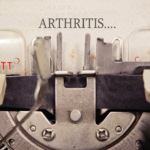
Iaremenko Sergii / shutterstock.com
Psoriatic arthritis (PsA), like other inflammatory diseases, has been associated with increased incidence for and mortality from cardiovascular disease (CVD), the most common comorbidity leading to death in many conditions treated by rheumatologists. But beyond recognizing the burden of increased inflammation, the mechanisms behind this association are not well understood, says M. Elaine Husni, MD, MPH, vice chair of rheumatology at the Cleveland Clinic in Ohio. “Just having [PsA] itself puts you at greater risk, but the reason why is not known,” she tells The Rheumatologist.
“There is [an] unmet need to precisely identify those patients with PsA who are at greatest risk of developing cardiovascular comorbidities,” Dr. Husni and colleagues note in a new research study published in the journal Arthritis & Rheumatology.1 They examined associations involving HDL (high-density lipoprotein, the so-called good cholesterol), and its activity in the blood with cardiovascular risk.
The researchers measured serum levels for paraoxonase and arylesterase, two antioxidant enzymatic proteins known to protect lipoproteins from oxidation and thereby provide defense against cardiovascular diseases. They compared levels of activity for these two enzymes in patients with either psoriasis or PsA with levels in healthy adult, volunteer controls. They also looked at the extent of inflammatory disease activity as measured by standard scores, such as the Disease Activity Score in 28 joints (DAS28); the Clinical Disease Activity Index; severity of pre-existing cardiovascular disease; risk factors, such as diabetes, hypertension and smoking; and lab test findings, such as erythrocyte sedimentation rate and C-reactive protein.
Decreases in HDL-associated paraoxonase (PON1) enzyme activity have been previously shown to predict major CVD-
related adverse events.2 PON1 activity and cardiovascular disease have also been studied in rheumatoid arthritis and systemic lupus erythematosus, with similar results.3,4
The new study enrolled 343 patients with either psoriasis or PsA in a longitudinal, prospective psoriatic disease registry, called the Cardiometabolic Outcome Measures in Psoriatic Arthritis Study (COMPASS), which started at Cleveland Clinic in 2011. The study compared these patients with 345 healthy controls.5
‘The HDL level goes deeper than [the] number itself, & it is the HDL function we need to understand,’ Dr. Husni notes.
The researchers found that serum arylesterase activity was significantly lower for patients with both psoriasis and PsA compared with healthy controls, decreasing in tandem with increased inflammatory disease activity for those with PsA. But they found no correlation with extent of disease or cardiovascular burden for patients with psoriasis, and no association between serum paraoxonase activity and extent of disease or cardiovascular burden in either disease cohort. This suggests arylesterase activity may be a more sensitive predictor of pre-existing cardiovascular disease than paraoxonase.
An additional factor in these complex associations is the higher use of DMARDs (disease-modifying anti-rheumatic drugs) in patients with PsA (70%) vs. psoriasis (24%), which could have influenced the relatively low inflammatory disease activity levels seen in some of those patients.



